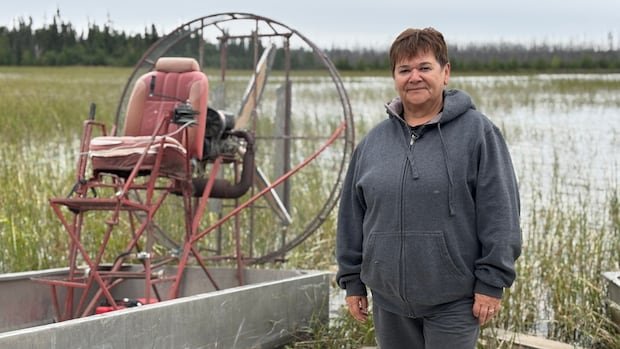Phyllis Smith ventures onto the serene waters of Agumik Lake to inspect her lush wild rice field, assessing the grain’s size and quality by gently tapping the plant against her boat. Some kernels yield firm rice, while others reveal emptiness — devoured by rice worms, a troublesome pest causing distress for harvesters in northern Saskatchewan and impacting their livelihoods.
“Each year, the situation seems to worsen,” remarked Phyllis, an experienced rice picker of over three decades. “It’s becoming increasingly unpredictable.”
The infestation of rice worms, originating from the U.S. and Manitoba and spreading into Saskatchewan’s water bodies, is posing a significant threat to the traditional wild rice crop, sparking urgent appeals from harvesters for effective remedies. Concerns are mounting that time is running out to safeguard the future of wild rice, a staple food utilized by Indigenous communities for centuries.
Phyllis and her spouse, Tommy Smith, have been actively harvesting near Pinehouse, Sask., approximately 380 kilometers north of Saskatoon, for many years, inheriting the cultivation and harvesting techniques from their ancestors. While they sporadically encountered worms in the rice in recent times, last year’s harvest saw a surge in the pest population. Their yield plummeted to a mere 20 bags, a stark decline from the usual average of around 400 bags before the insects invaded.
“You rely on rice for many aspects of life, so it’s truly devastating,” expressed Tommy, estimating a loss exceeding $40,000 from the previous harvest. “It’s a substantial setback, both emotionally and financially.”
Wild rice plays a pivotal role in the economic vitality of numerous Cree and Métis communities in northern Saskatchewan. A successful harvest can yield up to $100,000 for a family, often leading to employment opportunities through a local processing plant and rice buyers, who facilitate the transportation of rice bags. However, the diminished crop output is eroding income levels, leaving workers with limited job prospects and prompting some harvesters to contemplate divesting their equipment.
In pursuit of a resolution, a collaborative effort between researchers from the University of Saskatchewan, Saskatchewan Polytechnic, and the National Research Council of Canada is underway to investigate the northward migration of rice worms. Tim Sharbel, a plant sciences professor at the University of Saskatchewan, is actively engaging with harvesters in northern communities to address the issue.
The research team is exploring potential factors contributing to the worm infestation’s movement northward, citing forest fires and the inter-lake transportation of bags as potential triggers. Their innovative approach involves developing traps that utilize pheromones to entice rice worm moths away from the rice, preventing them from laying eggs. Initial testing phases have shown promising results in trapping a substantial number of insects, with plans for further trials in the upcoming season.
Pankaj Bhowmik, a senior research officer at the National Research Council, is leveraging advanced technology like an “electronic nose” to analyze the rice composition and flavor profile, aiming to equip harvesters with valuable insights through modern data collection methods.
Despite the challenges posed by the rice worms, the collaborative efforts between scientists and local harvesters offer hope for a sustainable solution to combat the pests. Lionel Smith, a seasoned harvester and buyer, remains optimistic that the ongoing partnership will yield effective strategies to protect the rice crops from further damage.
“We will persevere. Giving up is not an option. That’s not in our nature,” he affirmed, highlighting the broader issue of an aging workforce in the industry, with few young individuals entering the field.
On the shores of Agumik Lake, Phyllis Smith gears up for the upcoming harvest season, cautiously optimistic about the yield’s quality. Though an initial assessment indicated some presence of worms, the numbers were lower compared to the previous autumn. While contemplating the industry’s challenges, Phyllis, along with her husband and fellow harvesters, ponders the potential of selling their equipment and exiting the trade amid unprecedented adversities.
“In uncertain times like these, the thought of maintaining a harvesting boat seems futile. Will we ever witness thriving rice fields again?” she pondered. “The temptation to give up looms large.”


